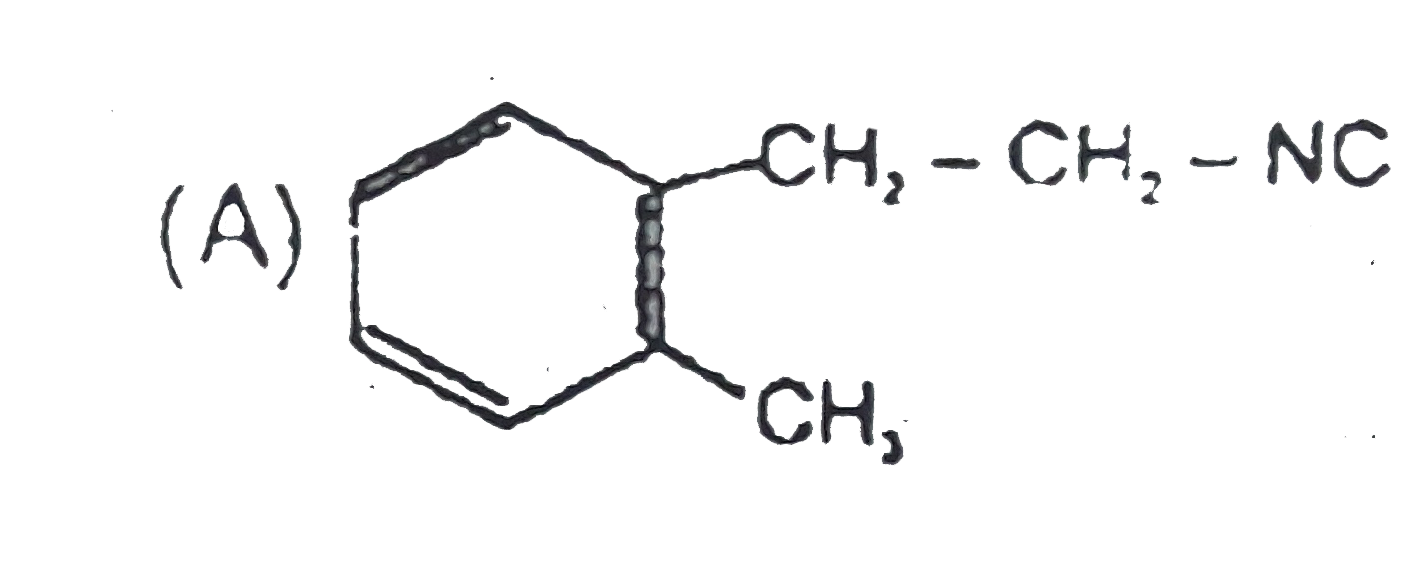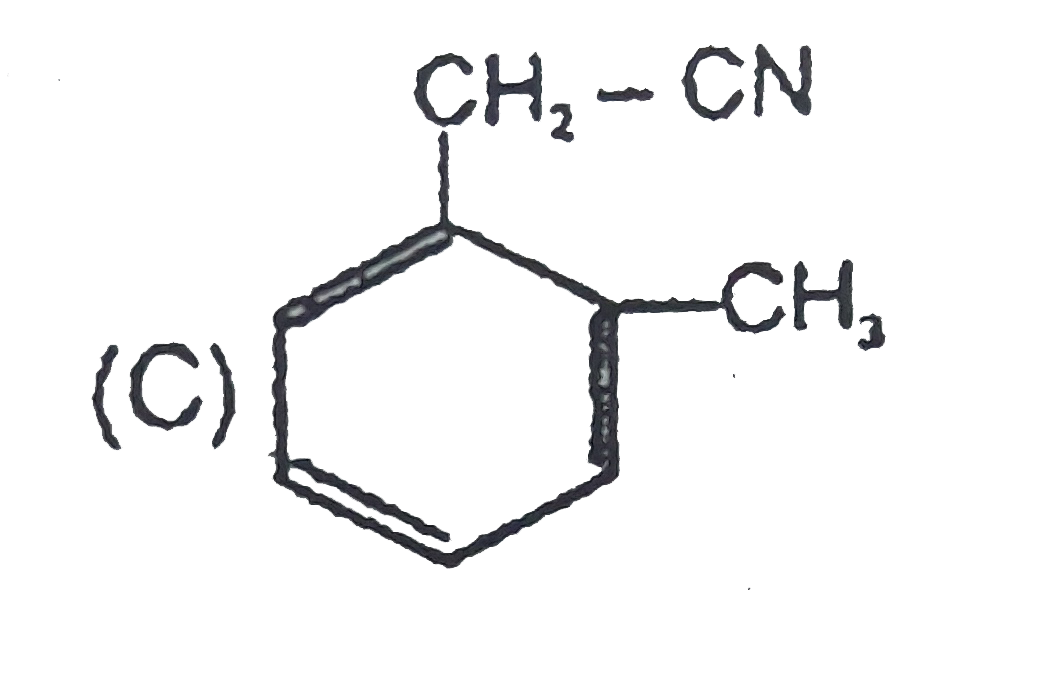Compounds A(C9H16) decolourises Br, in CCI4 A reacts alkaline KMnO4 to give a diol. A on ozonolysis gave B(C7H12O) and acetaldehyde. B reacts in presence of sodium hydroxide to give two products C(C7H12O2) and sodium salt which on nentralisation gave D(C2H,20). Con oxidation also gave 'D'. On the basis of the reactions give above answer the following questions.
The structure of 'D' is likely to be



any of the above
The correct Answer is:C
Topper's Solved these Questions
- ALDEHYDES AND KETONESBOOK - AAKASH SERIESCHAPTER - ALDEHYDES AND KETONESEXERCISE - Solved Problem
33 Videos
- ALDEHYDES AND KETONESBOOK - AAKASH SERIESCHAPTER - ALDEHYDES AND KETONESEXERCISE - Subjective exercise - 1 (Short answer Questions)
6 Videos
- ALDEHYDES AND KETONESBOOK - AAKASH SERIESCHAPTER - ALDEHYDES AND KETONESEXERCISE - PRACTICE SHEET-2
30 Videos
- ALCOHOLS, PHENOLS AND ETHERSBOOK - AAKASH SERIESCHAPTER - ALCOHOLS, PHENOLS AND ETHERSEXERCISE - ETHERS (OBJECTIVE EXERCISE-4)
50 Videos
- ALKYL AND ARYL HALIDESBOOK - AAKASH SERIESCHAPTER - ALKYL AND ARYL HALIDESEXERCISE - OBJECTIVE EXERCISE - 4 (ASSERTION (A) & REASON (R) TYPE QUESTIONS)
19 Videos
Similar Questions
An organic compound (A)(C9H12) gave (B)(C8H6O4) on oxidation by alkaline KMnO4(B) on heating does not from anhydride. Also , (B) reacts with Br2 in the presence of iron to give only one monobromo-derivative (C)(C8H5BrO4). WHat are (A),(B), and (D) ?
View SolutionAn organic compound (A)(C9H12) gave (B)(C8H6O4) on oxidation by alkaline KMnO4(B) on heating does not from anhydride. Also , (B) reacts with Br2 in the presence of iron to give only one monobromo-derivative (C)(C8H5BrO4). WHat are (A),(B), and (D) ?
View Solution
Knowledge Check
Compound (A) C12H20, discharges the colour of Br2−H2O and cold KMnO4 . On reduction with H2/Pt it gives compound (B) C12H22 . A on ozonolysis give cyclohexanone. Find structure of A :
A B
B C
C DNone of these
DNone of theseCompound (A) C12H20 discharges the colour of Br2−H2O and cold KMnO4 . On reduction with H2/Pt it gives compound (B) C12H22 . A on ozonolysis give cyclohexanone . Find structure of A :
A B
B C
C DNone of these
DNone of theseThe compound C8H9Cl(A) on treatments with KCN followed by hydrolysis gives C9H10O2(B).Ammonium salt of B on dry distillation yields C.Which reacts with alkaline solution of bromine to gives C8H11N.(D),Another compound E (C6H10O) is obtained by the action of nitrous acid on D. or by the action of aquouspotash on A,E on oxidation gives F(C8H10O) Which gives the inner anhydride G on heating.
The compound D is reaction with CHCl3+NaOH gives a compound H.The structure of H.A B
B C
C D
D
An organic compound 'A'(C4H10O) is optically active. On mild oxidation, it gives a compound 'B'(C4H8O) but upon vigorous oxidation, it gives another compound 'C'(C3H6O2). The compound 'C' along with 'D' are also formed from 'B' by reacting with iodine in the presence of alkali. Deduce the structures of 'A','B','C' and 'D'.
View SolutionAn organic compound 'A'(C4H10O) is optically active. On mild oxidation, it gives a compound 'B'(C4H8O) but upon vigorous oxidation, it gives another compound 'C'(C3H6O2). The compound 'C' along with 'D' are also formed from 'B' by reacting with iodine in the presence of alkali. Deduce the structures of 'A','B','C' and 'D'.
View SolutionAn ether ‘A’ (C5H12O) when heated with excess of hot concentrated HI produced two alkyl halides which on hydrolysis from compounds B and C. Oxidation of B gives an acid D whereas oxidation of C gave a ketone E. Deduce the structures of A, B, C, D and E.
View SolutionAn unsaturated compound C6H12 A) decolourless Br2. Water and on oxidation by acidified KMnO4 gives optically active carboxylic acid C4H9COOH (B). Give the structure of (A) and (B).
View SolutionThe compound C8H9Cl(A) on treatments with KCN followed by hydrolysis gives C9H10O2(B).Ammonium salt of B on dry distillation yields C.Which reacts with alkaline solution of bromine to gives C8H11N.(D),Another compound E (C6H10O) is obtained by the action of nitrous acid on D. or by the action of aquouspotash on A,E on oxidation gives F(C8H10O) Which gives the inner anhydride G on heating.
The compound D is reaction with CHCl3+NaOH gives a compound H.The structure of H.
View Solution

